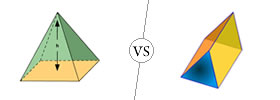Difference between XFP, SFP and SFP+
Key Difference: SFP, SFP+ and XFP, all refer to a type of transceiver that is plugged into a special port on a switch or to some network device. These transceivers are used in the field of telecommunication and data communication. XFP stands for 10 gigabit small form factor pluggable. They usually operate at optical wavelengths (colors) of 850nm, 1310nm or 1550nm. XFP complies with the agreement known as XFP MSA agreement. SFP protocol specifications are based on IEEE802.3, SFF-8472. SFP+ modules are smaller than XFP. SFP+ fiber optic transceivers comply with the protocol based on IEEE 802.3ae, SFF-8431 and SFF-8432.
 XFP (10 Gigabit Small Form Factor Pluggable) is a standard for the transceivers. This type of transceiver is not dependent on the protocol. Generally, it operates at optical wavelenghts corresponding to 850nm, 1310nm or 1550nm. The modules belonging to the XFP are hot swappable which means that the function of replacing the computer system components can be performed without shutting down the system. The specifications of XPF were developed by the XFP Multi Source Agreement Group.
XFP (10 Gigabit Small Form Factor Pluggable) is a standard for the transceivers. This type of transceiver is not dependent on the protocol. Generally, it operates at optical wavelenghts corresponding to 850nm, 1310nm or 1550nm. The modules belonging to the XFP are hot swappable which means that the function of replacing the computer system components can be performed without shutting down the system. The specifications of XPF were developed by the XFP Multi Source Agreement Group.
“SFP” stands for “Small Form-factor Pluggable.” It is most often used for Fast Ethernet of Gigabit Ethernet applications. They are capable of supporting speeds upto 4.25 Gbps. It interfaces a network device motherboard (for a switch, router, media converter or similar device) to a fiber optic or copper networking cable. It is specified by the SFP transceiver multi-source agreement.
SFP+ can be referred to as an expansion of the SFP standard. It has the capability to support speeds of 10 Gbps or even higher over fiber. The SFP+ product family includes cages, connectors, and copper cable assemblies. It is also similar to the performance requirements of SFF-8431 and also supports 8G Fiber Channel and 10G Ethernet applications. SPF+ comes with various advantages. It is a more compact factor package than compared to that of XFP. The cost of SFP+ is also less than that to the XFP.
Comparison between XFP, SFP and SFP+:
|
|
XFP |
SFP |
SFP+ |
|
Stands for |
10 Gigabit Small Form Factor Pluggable |
Small Form-factor Pluggable |
Small Form-factor Pluggable plus (standard form) |
|
Data rate |
10 G |
155M/622M/ 1.25G/ 2.5G/3G/ 4.25G |
6G/8.5G/10G |
|
Terms |
Dual fiber Single Fiber/WDM CWDM DWDM |
Dual fiber Single Fiber/WDM CWDM DWDM |
Dual fiber Single Fiber/WDM CWDM DWDM |
|
Distance
|
220m/300m/ 2km/10km/ 20km/40km/ 60km/80km/ 120km |
300m/2km/ 10km/15km/ 20km/40km/ 60km/80km/ 100km/120km/ 150km |
220m/300m/ 2km/10km/ 20km/40km/ 60km/80km |
|
Wavelengths |
850nm/1310nm/1550nm 1270nm/1330nm 1270nm-1610nm ITU17~ITU61 |
850nm/1310nm/1550nm 1310nm/1490nm/1550nm 1270nm-1610nm ITU17~ITU61 |
220m/300m/ 2km/10km/ 20km/40km/ 60km/80km/ 120km |
(The table has been taken from sopto.com)
Image Courtesy: fiber-optical-transceiver-module.com









Add new comment